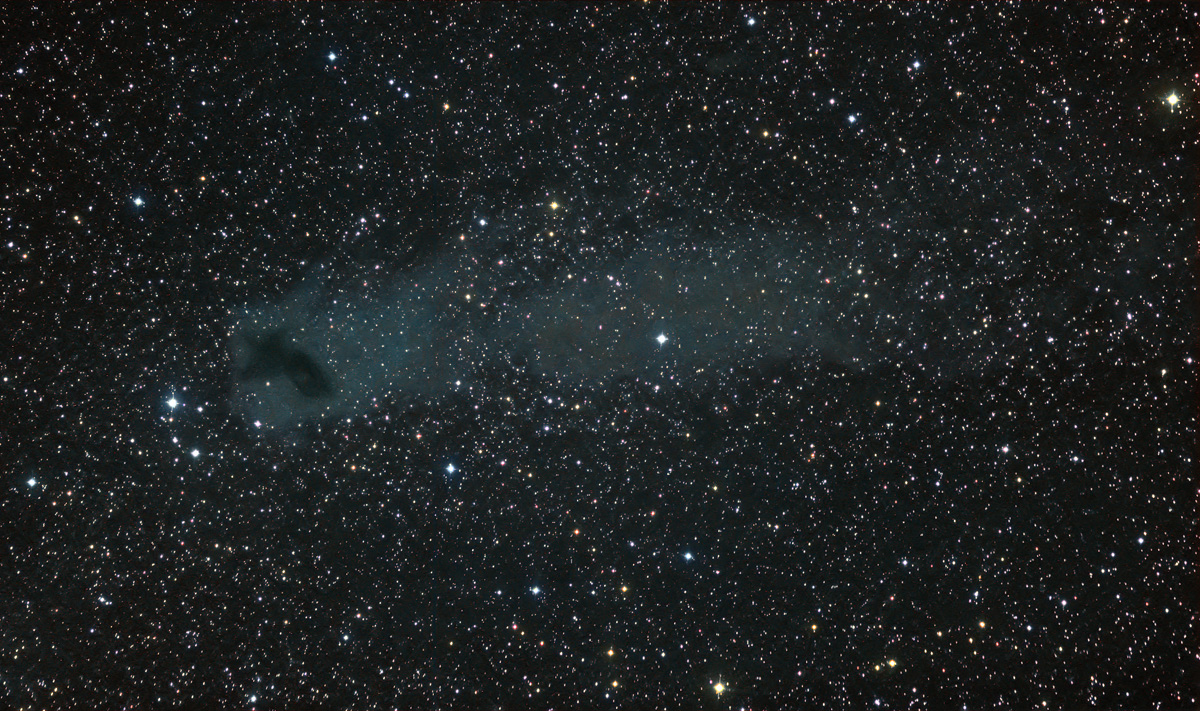
[back] CG22 (GN 08.26.8.01) in Pyxis

|
(c) 2010 All astro photo images are copyrighted. They may not be used or reproduced without explicit written permission from the authors. |
|
About this Image / Über dieses Bild
| CCD: | Fleischmann 7kx4k CCD |
| Image Type, Orientation: | LRGB Composite, North is at 3:00h. |
| Exposure time: | L: 6x900 sec. 1x1 bin, R,G,B: 2x900 sec. 2x2 bin. |
| Exposure date: | May 5th, 2005. |
| Location: | Capella Observatory at Amani Lodge, Kupferberg near Windhoek, Namibia. |
| Filter: | "Self made" filter slider with Astronomik Typ II L for luminance and Schott RG630, GG495+BG42 and BG25 for RGB. |
| Instrument: | Ganymed 60cm-Hypergraph in secondary focus, f=4800 mm. |
| Image seeing (FWHM): | 2.6" |
| Photographer: | Josef Pöpsel |
| Remarks: |
CG is the abbreviation for Cometary Globule. CGs are galactic dust clouds, which are formed by a very hot star in front of the "head". In contrast to CG4, which is well known at least from David Malins famous image (e.g. here) CG22 is more or less unknown.
Some more informations about the used CCD camera can be found at the remarks to Omega Centauri. Although the sensitivity of the camera is very low it certainly could be used for a survey of big star fields searching for extrasolar planets using the transit or microlensing method.
The image was enhanced using DDP. |
|
|
|
| Bemerkungen: |
CG ist die Abkürzung für "Cometary Globule" (Kometarische Globule). CGs sind galaktische Staubwolken, die durch einen sehr heißen Stern geformt werden. Im Gegensatz zu CG4, die durch das berühmte Bild von David Malin bekannt ist (siehe z.B. hier), ist CG22 mehr oder weniger unbekannt.
Einige weitere Informationen
zur eingesetzten CCD-Kamera sind bei den Bemerkungen zu
Omega Centauri
zu finden. Trotz der sehr geringen Empfindlichkeit der Kamera könnte sie
sicher gut zur Durchmusterung von großen Sternfeldern auf der Suche nach
extrasolaren Planeten nach der Transit- oder Microlensing-Methode dienen...
Das Bild wurde mit Hilfe DDP bearbeitet. |
Back to the Diffuse Nebulae Overview / Zurück zur Diffuse-Nebel-Übersichtsseite